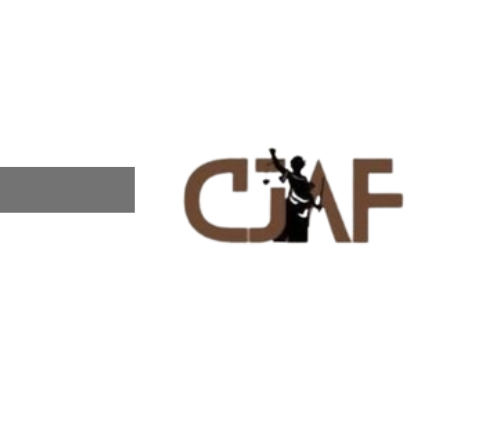The Dragon and Royal Symbols in Chinese Culture: From Myth to Modern Legacy
Dragons in Chinese culture transcend myth—they embody imperial authority, cosmic balance, and societal ideals. Rooted deeply in cosmology, dragons were seen not as chaotic beasts, but as disciplined forces representing the emperor’s divine right to rule. This sacred connection between dragon imagery and imperial power reveals a civilization’s enduring quest for harmony between heaven and earth.
The Dragon as a Cultural Archetype: Authority and Cosmic Power
In Chinese cosmology, the dragon symbolized the Mandate of Heaven—a celestial endorsement granting emperors the right to govern. Unlike Western depictions often tied to destruction, Chinese dragons were harbingers of order, prosperity, and celestial wisdom. Their serpentine form mirrored the flow of qi, the vital energy sustaining life and empire alike. Such symbolism transformed dragons into living metaphors of virtuous rule.
Dragons adorned imperial robes, palaces, and ceremonial banners, their presence reinforcing the emperor’s role as mediator between the mortal and cosmic realms. The Dragon Throne itself, shimmering with dragon motifs, signified not mere power, but sacred stewardship over natural and social harmony.
Societal values—strength, wisdom, and balance—were encoded in dragon imagery. A dragon’s majestic yet graceful movement embodied ideal governance: authoritative yet compassionate, powerful yet restrained.
Dragons Beyond Myth: The Royal Symbol in Historical Context
Throughout China’s dynasties, dragon motifs became enduring markers of royal legitimacy. From the Tang to Qing, emperors displayed dragons in uniforms, architecture, and official seals, projecting continuity and divine sanction. The five-clawed dragon, exclusively reserved for the emperor, distinguished the imperial authority from regional or foreign rulers.
Consider the Forbidden City: its roofs curve like dragon spines, and carved dragon pillars line the halls—each a deliberate statement of cosmic order under imperial care. European monarchies adopted dragon symbolism too, yet in China, the dragon’s meaning was uniquely tied to moral governance rather than conquest alone.
Parallel symbolism exists in other Asian traditions—Thai and Vietnamese royal emblems incorporate serpentine motifs—but the Chinese dragon stands apart for its fusion of celestial destiny with earthly responsibility.
The Wrath Element: Dragons as Controlled Cosmic Forces
Mythological dragons were not agents of chaos but enforcers of balance. Their wrath—manifest in storms, floods, or celestial omens—was disciplined, meant to correct imbalance rather than unleash destruction. This disciplined power reflected the emperor’s duty: to uphold justice and maintain social order through measured authority.
Artistic depictions often show dragons coiling with thunderous force yet steady in form—symbolizing royal control over fate and destiny. In literature, wrathful dragons appear as guardians who punish corruption, reinforcing the idea that divine power demands ethical restraint.
This concept echoes in modern governance: authority without chaos, strength tempered by responsibility—a lesson as relevant today as in imperial courts.
Natural Parallels: Biological Regeneration and Celestial Cycles
Chinese cosmology viewed renewal not as destruction but as transformation—a dragon’s shedding of scales mirrored natural cycles of rebirth. This resonated deeply with dynastic transitions, where empires rose and fell yet preserved cultural continuity.
Scientifically, Earth’s rotation and the Coriolis effect demonstrate nature’s inherent balance—patterns that ancient Chinese astronomers linked to the dragon’s cosmic dance. Just as the dragon governs weather and fate, the heavens govern natural order, sustaining life through predictable cycles.
The endurance of royal power through dynastic change reflects this mythic truth: true authority adapts, endures, and renews—much like the regenerating starfish, whose ability to grow new limbs symbolizes resilience rooted in ancestral continuity.
| Regeneration & Cycles |
|---|
| Starfish regenerate lost limbs through cellular regeneration, symbolizing resilience and renewal without losing identity. |
| The Coriolis effect maintains planetary balance via fluid dynamics—mirroring how dragons uphold cosmic equilibrium through disciplined power. |
| Chinese dynasties endured upheaval yet preserved cultural essence, much like mythic dragons that transform rather than decay. |
Royal Fishing: A Modern Embodiment of Symbolic Royal Power
Royal Fishing, a contemporary cultural practice rooted in ancient symbolism, transforms myth into living tradition. Fish—especially carp and koi—have long represented prosperity, abundance, and imperial fortune in Chinese art and poetry. The act of fishing becomes a ritual of catching auspiciousness, echoing the dragon’s role in securing abundance through harmony with nature.
This practice connects past and present: just as emperors once “caught” auspicious energies through symbolic rituals, modern participants engage in a meditative act of gratitude and continuity. The fish is not just food—it is a metaphor for the wealth of heritage, wisdom, and renewal.
Exploring Royal Fishing reveals how dragon-linked ideals persist: abundance is not hoarded but shared, prosperity flows not by force but through balance—echoing the dragon’s celestial mandate.
Synthesizing Myth and Practice: Dragons and Royal Symbols Today
From cosmic archetypes to royal ceremonies, dragon symbolism evolves while retaining core meaning. The dragon’s legacy today is not confined to museums or mythology—it lives in cultural expressions like Royal Fishing, where ancestral values meet modern engagement.
This enduring relevance teaches us timeless lessons: true power lies in balance, renewal, and stewardship. The dragon, as both myth and metaphor, reminds us that authority must serve harmony, not dominate it.
As both ancient lore and living tradition, these symbols shape national identity and offer reflection on leadership, resilience, and the cycles of renewal that bind past, present, and future.
| Symbol | Ancient Meaning | Modern Expression |
| Dragon | Celestial authority and cosmic balance | Royal Fishing, cultural identity |
| Fish | Wealth and imperial prosperity | Abundance rituals and shared fortune |
| Regeneration | Cyclical renewal of dynasties and nature | Resilience through change and continuity |
“The dragon rules not by force, but by harmony—its wrath a call to order, not chaos.”
Whether in imperial halls or modern cultural practice, dragon symbolism endures as a profound expression of power rooted in wisdom, renewal, and balance. The legacy lives not in myth alone, but in the quiet acts of connection that sustain heritage across centuries.
Explore Royal Fishing: where ancient symbols meet modern tradition
